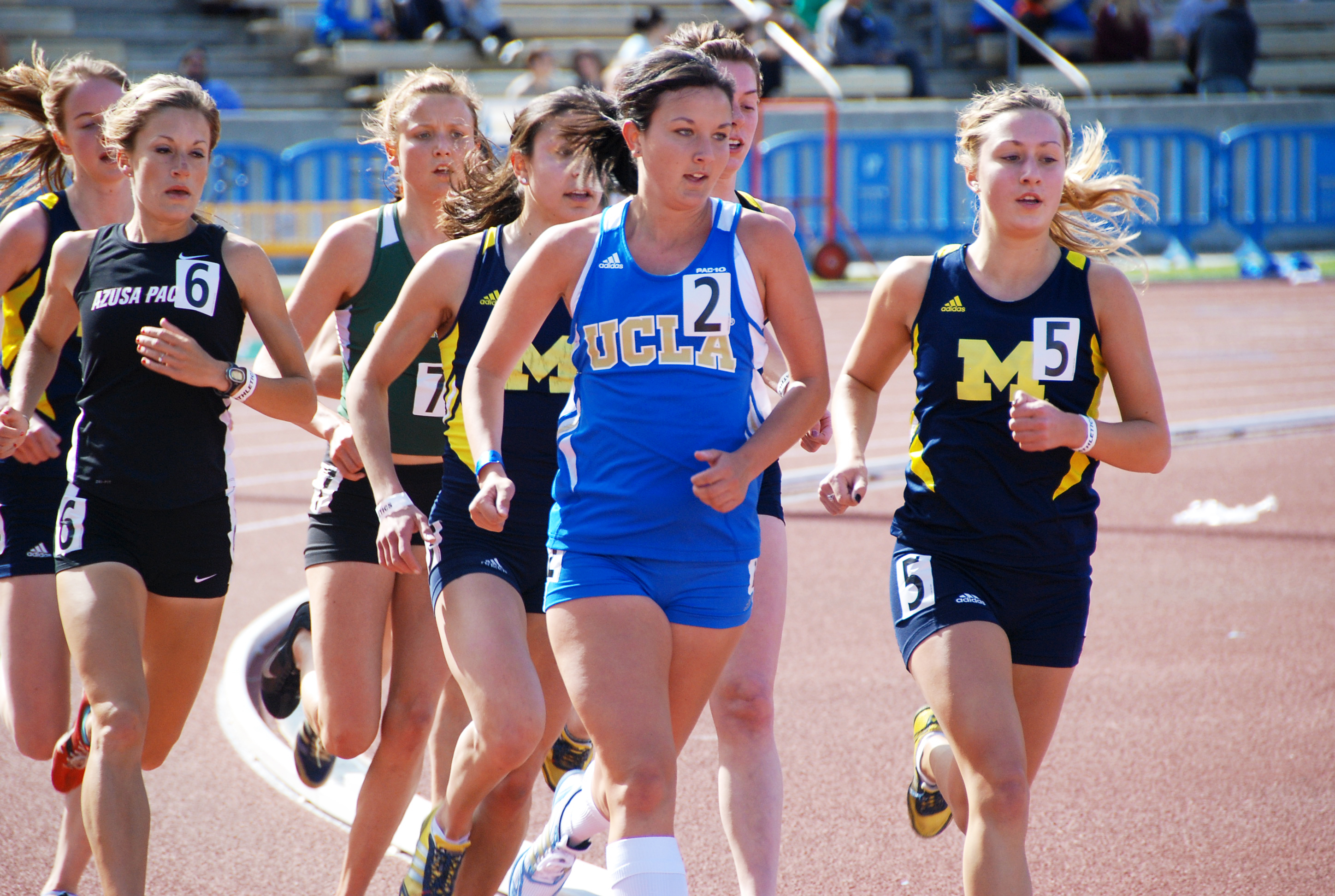
With the graduation of Shannon Murakami, shown here competing last year, the women’s squad will rely on freshmen and transfers to step up.
Credit: UCLA Athletics
The first thing coach Forest Braden does when you meet him up in Mammoth Lakes is run you hard.
Up at an elevation of 7,500 feet, you run at 3-mile intervals, moving your arms and pushing your legs, as the thin air slips into your adjusting lungs, the heart pumping back and forth, the short compressed breaths going in and out like a flame battered by the wind.
At this altitude you feel light-headed. That’s expected. The increased partial pressure leads to decreased oxygen, which leads to weakened muscles and instant fatigue. It feels like you’re running while wearing a full backpack or weights tied around your ankles.
Even though your Achilles tendon burns and you need to stretch, you keep on heading down the path, not wanting to break the rhythmic pace created by your teammates.
“You have to fight through it,” said redshirt junior Katja Goldring.
“The pain is a constant battle. Everyone has had to deal with injuries at some point, and you have to decide in the moment to work through it.”
If the feeling in the air seems a bit more tense than it used to be, that is because the upcoming cross country season is about to begin. The urgency has risen, motivated by the team’s determination to redeem itself after a disappointing performance in last November’s NCAA West Regionals.
Both the men and women’s teams were ready to make a strong showing. The squads came in with momentum and were fueled by the desire to make a case that they belonged with the Stanfords and Oregons of the cross country world.
“We were prepared. Sometimes, things just don’t go your way,” Braden said.
A few weeks before the race, one of the leading runners for the men, redshirt senior Dylan Knight, came down with an illness. Shortly after, one of the leading female runners, then-senior Shannon Murakami, was hit with a foot problem.
And with rainy skies and damp conditions, several runners tripped and fell underneath the spotlight of the West Regionals race before stumbling across the finish line.
“It was a disappointment,” Knight said. “I was in shape, and something I couldn’t control got in the way in the end.”
“All the athletes worked so hard to get there,” Braden said.
“We just need to be more consistent. We can’t take anything for granted.”
That’s why you keep on pushing past the pain as you make your way through the foothills of Mammoth Lakes. You see Kent Morikawa, Dylan and Spencer Knight ““ all redshirt seniors ““ pushing the pack. They will be counted on to further motivate the No. 8 West Region men’s squad with their experience and leadership.
For the women’s squad, the graduation of standout runners Murakami and Kelcie Wiemann means that success will rest with a youth movement. A class of new runners that includes junior transfer Sarah Toberty and freshman Bronte Golick will come in to complement the steps taken by the No. 10 West Region women’s squad to become a top team. Dominated by underclassmen, the women’s squad will also look to sophomore Sierra Vega in leading the jump to get to the next level.
“A lot of people see having a young team as a disadvantage,” Vega said, “but we’ve done a good job of recruiting girls who know what it’s going to take. Everyone is hungry to do well, and we’re willing to put in the work. We want to put UCLA back on the map, where it should be.”
“The women are going to be very exciting to watch,” Braden added. “They’re the underdogs, but they can come up and surprise a lot of people. They have a lot of potential.”
The unlocking of that potential begins with those 3-mile morning and afternoon workouts. Despite the initial pain, there is a purpose to these yearly retreats into the mountains that has become a rite of passage for new members to the team.
As Braden stands a few yards from the team’s cabin, he watches you and the rest of the runners move day in and day out. For a group that is relatively young and new to the world of collegiate cross country running, the team’s mantra has started to form around two simple principles: Run hard and stay disciplined.
“The training in Mammoth (Lakes) has helped me get tougher,” Knight said. “Running is more mental than anything. We’re learning to push through it all and the pain.”
Over the course of a long season, toughness will be a priority. You look to reach the runner’s high, a period during extreme physical activity when the brain releases endorphins and dopamine ““ the pleasure chemicals ““ allowing you to surpass your normal physical limits.
“It’s just this feeling,” Toberty said. “When you do a good run, there’s this energy and you feel good, like it’s all worth it.”
By training in the crisp air of Mammoth Lakes, Braden wants to increase his runners’ endurance and achieve that runner’s high. If the men and women’s cross country teams look like they are faster this season, it is because they are.
“We feel like we can compete with anybody and let it all on the line,” Braden said.
And that is how you will find success.
